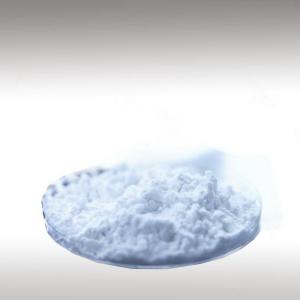
HYALURONIC ACID (SODIUM HYALURONATE) - INGREDIENTS

BASE / GENERAL DATA
Information submited: March 11, 2016 Modified: May 30, 2018 By: OperaDreamhouse
Alternative Names: Hyaluronic Acid, Sodium Salt, Sodium Hyaluronate Solution, Sodium Salt Hyaluronic Acid, Healon, Hyalurone Sodium.
Sodium hyaluronate is the Sodium Salt of hyaluronic Acid. Hyaluronic Acid is found naturally in the fluid that bathes joints, in the vitreous humor of the eye and in the skin. Sodium Hyaluronate has a smaller molecular size than hyaluronic Acid, causing it to easily penetrate the skin's surface, and is able to retain a relatively large amount of Water - up to 1,000 its own weight. This means it can penetrate to lower layers of the skin, attract and retain Water, and promote nutrient absorption.
The magic of this ingredient lies in its ability to retain moisture. It’s considered to have a greater capacity to hold moisture than any other natural or synthetic polymer. In fact, one gram of Hyaluronic Acid is able to hold up to six liters of Water.
Hyaluronic Acid in the past was primarily derived from rooster combs, but given the increasing concern about animal derived ingredients, a method was developed in 1989 to extract Hyaluronic Acid from vegetable sources such as soybean or corn, using afermentation process involving bacteria. Bacteriais used in fermenting many products such as wine, beer, cheese, yoghurt and even the leavening of breed. This process creates a very high quality Hyaluronic Acid.
Hyaluronic Acid is a macromolecule and it can be detected only within living organisms. Hyaluronic Acid is soluble in Water.
Sodium Hyaluronate is available in various molecular weights, having different costs. The lower the molecular weight, the merrier are the chances the Hyaluronic Acid molecules penetrate the derma. The lower the molecular weight, more expensive is its price and less it moisturizes the skin. This is also why the low molecular version of Sodium Hyaluronate is usually used in synergy with the high molecular weight of Sodium Hyaluronate.
In addition to seeing Hyaluronic Acid listed as an ingredient in products, you’ve probably also seen the similarly named sodium hyaluronate. There indeed is a connection. Chemically, sodium Hyaluronate is a Salt derived from Hyaluronic Acid and it has unique advantages for skin in comparison to “regular” Hyaluronic Acid.
Sodium Hyaluronate main strength lies in its molecular size. During the process of creating Sodium Hyaluronate, its molecular weight decreases due to the removal of lipids, proteins, and nucleic acids. Removing these compounds makes the Sodium Hyaluronate molecule much smaller than that of Hyaluronic Acid. That means that the sodium hyaluronate, when applied topically, can penetrate the skin more easily than the Hyaluronic Acid, which makes the Sodium Hyaluronate an asset in skincare products.
The magic of this ingredient lies in its ability to retain moisture. It’s considered to have a greater capacity to hold moisture than any other natural or synthetic polymer. In fact, one gram of Hyaluronic Acid is able to hold up to six liters of Water.
Hyaluronic Acid in the past was primarily derived from rooster combs, but given the increasing concern about animal derived ingredients, a method was developed in 1989 to extract Hyaluronic Acid from vegetable sources such as soybean or corn, using afermentation process involving bacteria. Bacteriais used in fermenting many products such as wine, beer, cheese, yoghurt and even the leavening of breed. This process creates a very high quality Hyaluronic Acid.
Hyaluronic Acid is a macromolecule and it can be detected only within living organisms. Hyaluronic Acid is soluble in Water.
Sodium Hyaluronate is available in various molecular weights, having different costs. The lower the molecular weight, the merrier are the chances the Hyaluronic Acid molecules penetrate the derma. The lower the molecular weight, more expensive is its price and less it moisturizes the skin. This is also why the low molecular version of Sodium Hyaluronate is usually used in synergy with the high molecular weight of Sodium Hyaluronate.
In addition to seeing Hyaluronic Acid listed as an ingredient in products, you’ve probably also seen the similarly named sodium hyaluronate. There indeed is a connection. Chemically, sodium Hyaluronate is a Salt derived from Hyaluronic Acid and it has unique advantages for skin in comparison to “regular” Hyaluronic Acid.
Sodium Hyaluronate main strength lies in its molecular size. During the process of creating Sodium Hyaluronate, its molecular weight decreases due to the removal of lipids, proteins, and nucleic acids. Removing these compounds makes the Sodium Hyaluronate molecule much smaller than that of Hyaluronic Acid. That means that the sodium hyaluronate, when applied topically, can penetrate the skin more easily than the Hyaluronic Acid, which makes the Sodium Hyaluronate an asset in skincare products.

SPIRITUAL PRACTISES DATA

MEDICINE / HEALTH DATA
Information submited: March 29, 2016 Modified: May 30, 2017 By: OperaDreamhouse
Sodium Hyaluronate is generally classified as non - toxic. Sodium Hyaluronate is also not known to be irritating skin.
Its water - binding and water - attracting attributes fill up the spaces between the connective fibers Collagen and elastin in the dermis. When injected into the face, Hyaluronic acid functions to hydrate and separate the skin, holding onto Water and supporting all that makes the face plump and voluptuous.
Its water - binding and water - attracting attributes fill up the spaces between the connective fibers Collagen and elastin in the dermis. When injected into the face, Hyaluronic acid functions to hydrate and separate the skin, holding onto Water and supporting all that makes the face plump and voluptuous.

BEAUTY / COSMETICS DATA

FOOD / COOKING DATA
COMMENTS
No comments.
Newest mixtures containing Hyaluronic Acid (Sodium Hyaluronate):

Regenerating - moisturizing evening facial mask
March 11, 2016


